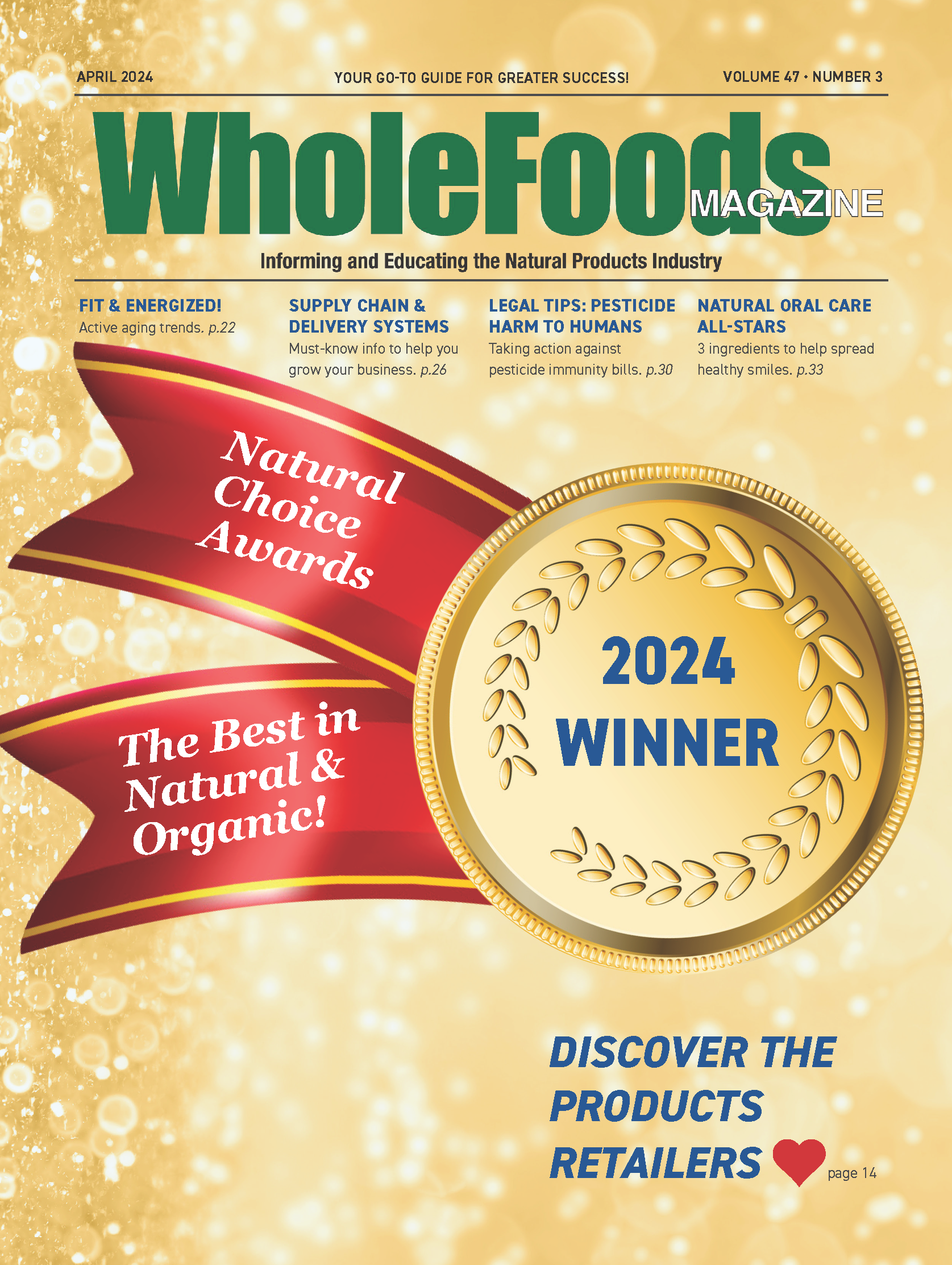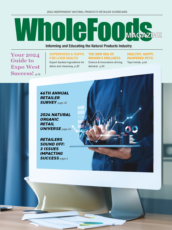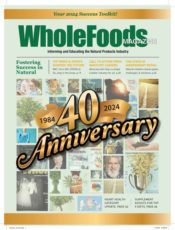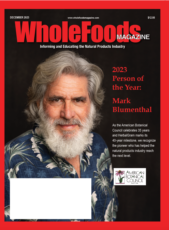
Quicklinks
WholeFoods Magazine
Data Shows Consumers Will Pay For Personal Care Transparency

By Kira Karapetian, Vice President of Marketing, Label Insight
The modern consumer is tech-savvy, health, environmentally and socially conscious, and connected to countless, intersecting online communities sharing information in real-time. At the same time, consumers are increasingly making purchases based on their health and wellness goals, looking to purchase items that contribute to a healthier lifestyle.
This trend isn’t going away anytime soon. Transparency from brands is increasingly important to consumers, and they want more than just the required product information on a product’s label.
Recent research from Label Insight's 2017 Ingredient Confusion study revealed that 68% of those surveyed believe it is important or extremely important to consider the ingredients when deciding which products to buy. What’s more, if a brand doesn’t provide them with this information consumers will look elsewhere for it.
While this demand has already largely impacted the food industry, the personal care market is undergoing a similar transformation. In particular, the organic and natural beauty market is booming – its value is expected to reach $13.2 billion by 2018. Shoppers are taking more interest in what is in their personal care products - from face lotion to shampoo to sunscreen - and will make buying decisions based on ingredient information. Women, and mothers in particular, are the driving force behind this growth. They want to purchase relatable products and authentic brands that are both good for their families and the environment.
But while consumers are evaluating the ingredients in their favorite shampoo or lotion, there is still significant confusion and concern about the ingredients listed on labels and whether or not they fit into their personal requirements.
A staggering 81% of consumers said they do not recognize ingredients on the label of personal care products at least somewhat often.
In an example posed in the Label Insight survey, 88% of respondents did not know what tetrahexyldecyl ascorbate was and 49% would not be comfortable buying a personal care product that contained it. When provided the definition as the liquid form of vitamin C and its purpose to enable the vitamin C to penetrate the skin more effectively, there was a 43% increase in people who would be comfortable buying it.
To create further confusion for the consumer, the personal care industry is not as regulated as the food industry today. In the U.S., cosmetics safety regulation hasn’t been updated in more than 75 years. As such, only 11 ingredients are banned in the U.S. while the E.U. has more than 1,300 banned ingredients. The average woman uses 12 personal care products a day including shampoo, cosmetics, toothpaste and deodorant – all of which contain a staggering 168 different chemicals. If consumers don't understand product ingredients it often impacts their trust of the brand, and affects their purchase behavior:
Overall, consumers are demanding greater transparency and specifically asking for more insight into the ingredient selection process. They want to understand more about each ingredient and why certain ingredients are used in a product. Early adopters of transparency meeting these demands head-on.
For example, Unilever recently launched a new fragrance transparency initiative for its personal care brands. This initiative goes beyond labeling requirements to disclose the fragrance ingredients included in individual products (down to 0.01% of the product formulation) along with details of the scent the fragrance ingredients bring to the product. Unilever websites will offer information such as Unilever’s approach to developing safe products, explanations of ingredient types and individual fragrance ingredients, with the ability to look up specific ingredients and understand their function in the product. In fact, we expect to see brands move toward “ingredient storytelling” versus simply listing ingredients.
Bringing this level of transparency to consumers is no easy feat. While manufacturers may want to provide greater transparency, it can be a very challenging undertaking. Brands must understand all their workflow processes and make appropriate information available to regulators, consumers and quality control personnel. The volume of data that needs to be collected, analyzed and harnessed is staggering. Conscious brands are turning to data science to automate this process. They are using technology to analyze product details and provide consumers with easy-to-understand information about the ingredient and sustainability details of their favorite products.
And while it’s still early to demonstrate whether or not greater transparency will lead to increased sales, Nielsen announced a new solution that measures the sales of ingredients and U.S. government-regulated attributes for non-food categories, including personal care. Nielsen Product Insider enables brands and retailers to measure sales performance, analyze shopper demographics, assess product trends and evaluate personalization needs for health and wellness consumers.
While legislation may not be driving industry change for personal care products, it is clear that consumer buying behavior is. Millennial purchasing power and technology are creating a fast moving and inescapable wave of transparency demand for brands and retailers. Now, it’s up to the industry players to get ahead of the wave or risk being crushed by it.
The modern consumer is tech-savvy, health, environmentally and socially conscious, and connected to countless, intersecting online communities sharing information in real-time. At the same time, consumers are increasingly making purchases based on their health and wellness goals, looking to purchase items that contribute to a healthier lifestyle.
This trend isn’t going away anytime soon. Transparency from brands is increasingly important to consumers, and they want more than just the required product information on a product’s label.
Recent research from Label Insight's 2017 Ingredient Confusion study revealed that 68% of those surveyed believe it is important or extremely important to consider the ingredients when deciding which products to buy. What’s more, if a brand doesn’t provide them with this information consumers will look elsewhere for it.
While this demand has already largely impacted the food industry, the personal care market is undergoing a similar transformation. In particular, the organic and natural beauty market is booming – its value is expected to reach $13.2 billion by 2018. Shoppers are taking more interest in what is in their personal care products - from face lotion to shampoo to sunscreen - and will make buying decisions based on ingredient information. Women, and mothers in particular, are the driving force behind this growth. They want to purchase relatable products and authentic brands that are both good for their families and the environment.
But while consumers are evaluating the ingredients in their favorite shampoo or lotion, there is still significant confusion and concern about the ingredients listed on labels and whether or not they fit into their personal requirements.
A staggering 81% of consumers said they do not recognize ingredients on the label of personal care products at least somewhat often.
In an example posed in the Label Insight survey, 88% of respondents did not know what tetrahexyldecyl ascorbate was and 49% would not be comfortable buying a personal care product that contained it. When provided the definition as the liquid form of vitamin C and its purpose to enable the vitamin C to penetrate the skin more effectively, there was a 43% increase in people who would be comfortable buying it.
To create further confusion for the consumer, the personal care industry is not as regulated as the food industry today. In the U.S., cosmetics safety regulation hasn’t been updated in more than 75 years. As such, only 11 ingredients are banned in the U.S. while the E.U. has more than 1,300 banned ingredients. The average woman uses 12 personal care products a day including shampoo, cosmetics, toothpaste and deodorant – all of which contain a staggering 168 different chemicals. If consumers don't understand product ingredients it often impacts their trust of the brand, and affects their purchase behavior:
- 45% of consumers say they trust the brand less when they see personal care ingredients they don't recognize or find confusing.
- 61% of women are more likely to buy personal care products that contain ingredients they understand or recognize.
- 49% will pay more for a personal care product that contains ingredients they understand or recognize.
- 53% would be willing to switch to a different personal care product if they understood the ingredients in that product better.
Overall, consumers are demanding greater transparency and specifically asking for more insight into the ingredient selection process. They want to understand more about each ingredient and why certain ingredients are used in a product. Early adopters of transparency meeting these demands head-on.
For example, Unilever recently launched a new fragrance transparency initiative for its personal care brands. This initiative goes beyond labeling requirements to disclose the fragrance ingredients included in individual products (down to 0.01% of the product formulation) along with details of the scent the fragrance ingredients bring to the product. Unilever websites will offer information such as Unilever’s approach to developing safe products, explanations of ingredient types and individual fragrance ingredients, with the ability to look up specific ingredients and understand their function in the product. In fact, we expect to see brands move toward “ingredient storytelling” versus simply listing ingredients.
Bringing this level of transparency to consumers is no easy feat. While manufacturers may want to provide greater transparency, it can be a very challenging undertaking. Brands must understand all their workflow processes and make appropriate information available to regulators, consumers and quality control personnel. The volume of data that needs to be collected, analyzed and harnessed is staggering. Conscious brands are turning to data science to automate this process. They are using technology to analyze product details and provide consumers with easy-to-understand information about the ingredient and sustainability details of their favorite products.
And while it’s still early to demonstrate whether or not greater transparency will lead to increased sales, Nielsen announced a new solution that measures the sales of ingredients and U.S. government-regulated attributes for non-food categories, including personal care. Nielsen Product Insider enables brands and retailers to measure sales performance, analyze shopper demographics, assess product trends and evaluate personalization needs for health and wellness consumers.
While legislation may not be driving industry change for personal care products, it is clear that consumer buying behavior is. Millennial purchasing power and technology are creating a fast moving and inescapable wave of transparency demand for brands and retailers. Now, it’s up to the industry players to get ahead of the wave or risk being crushed by it.







